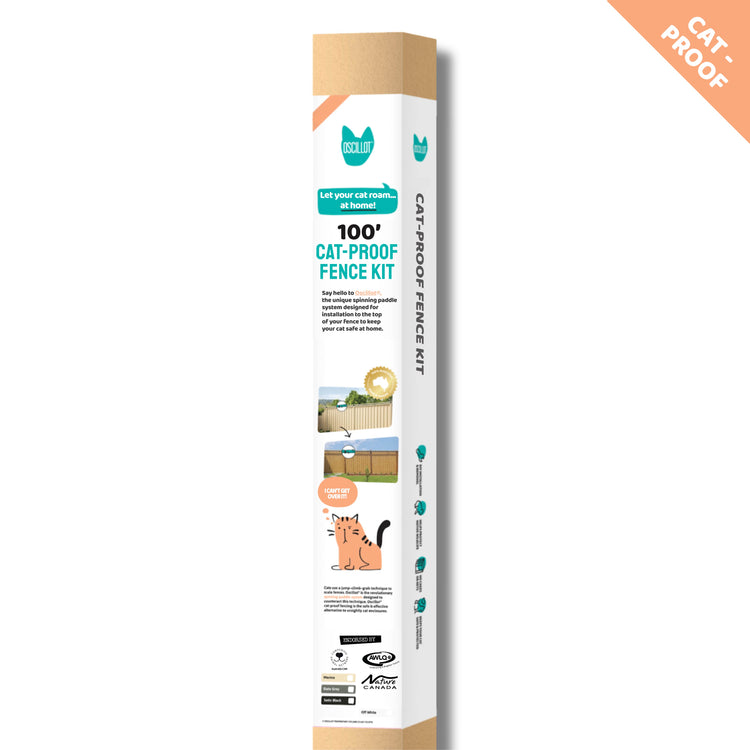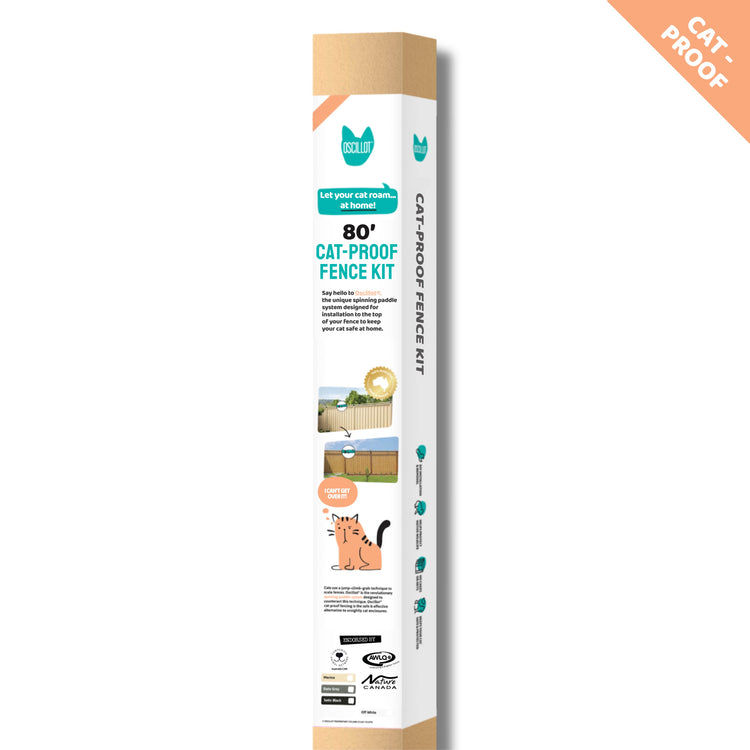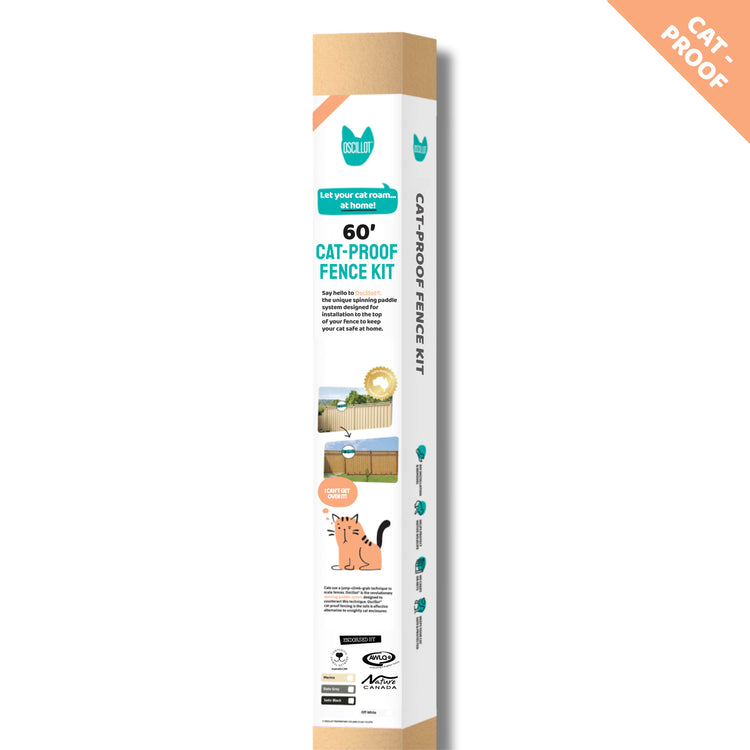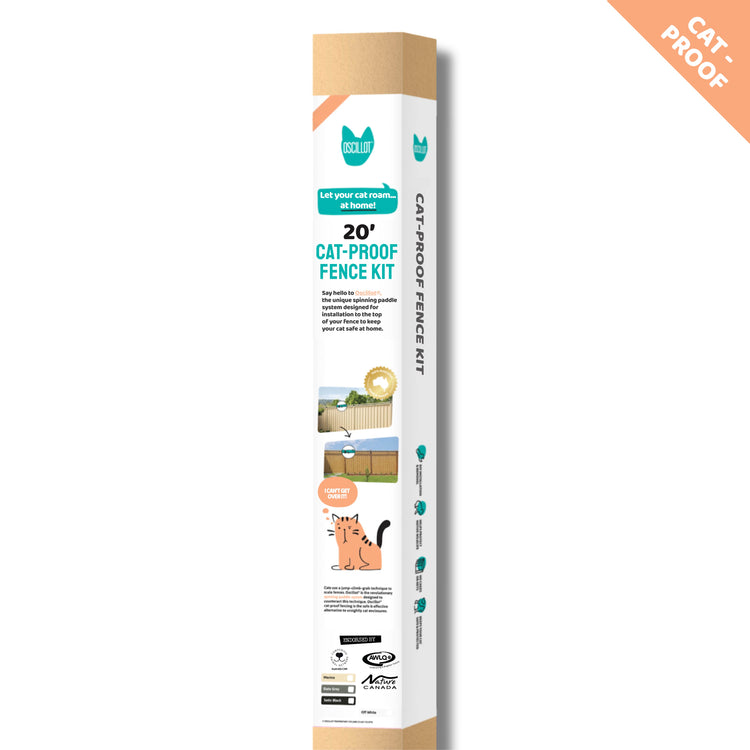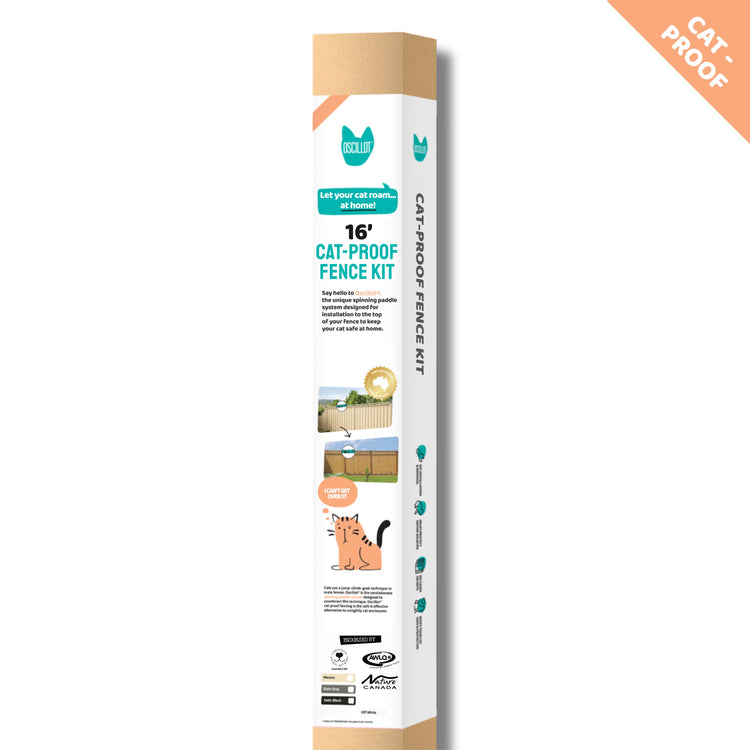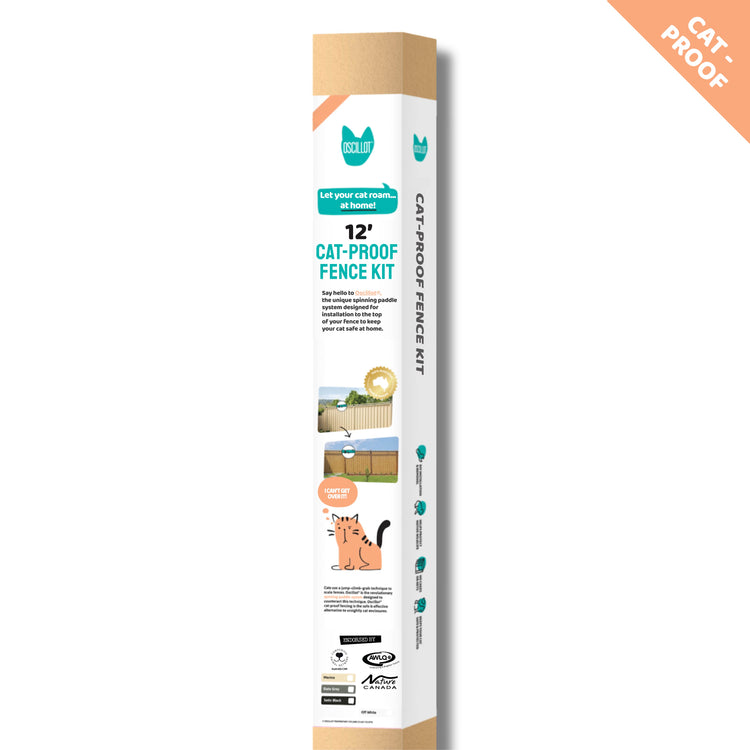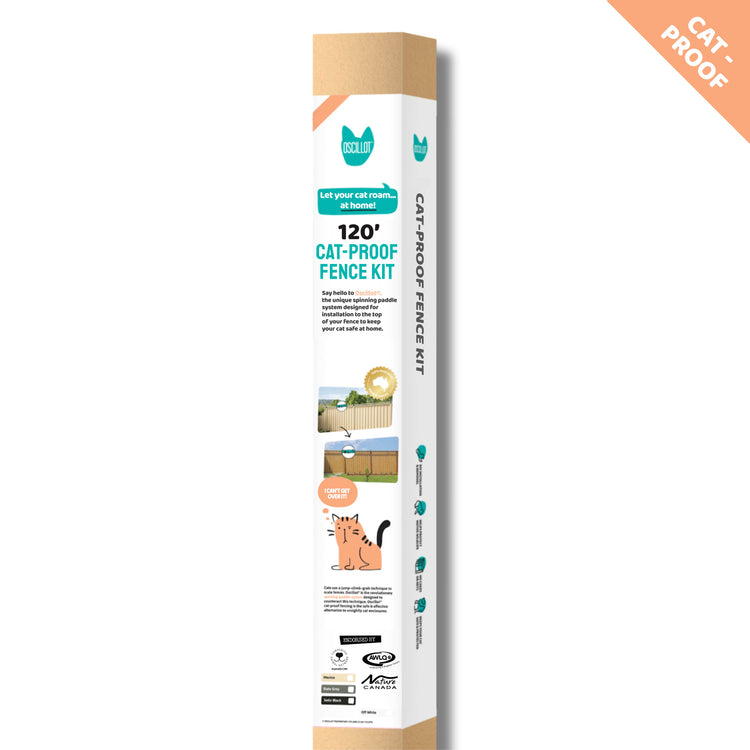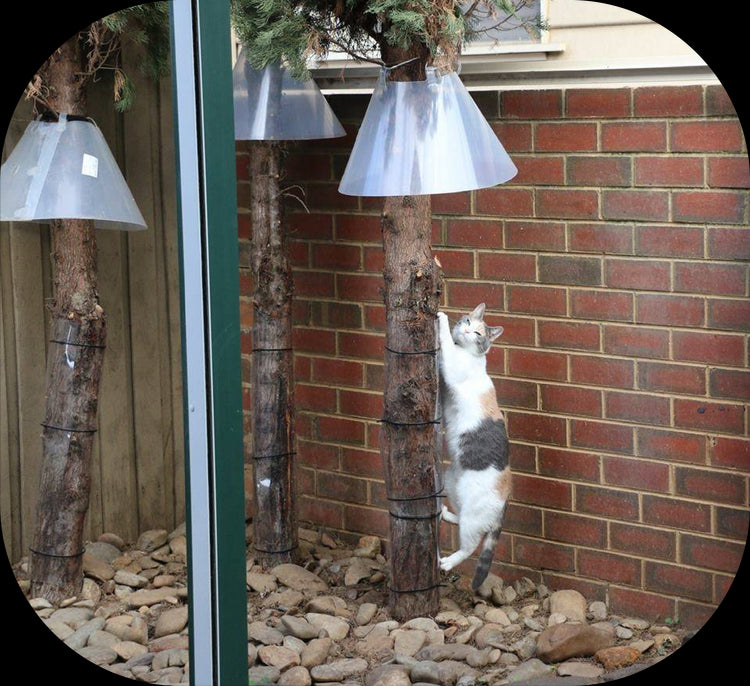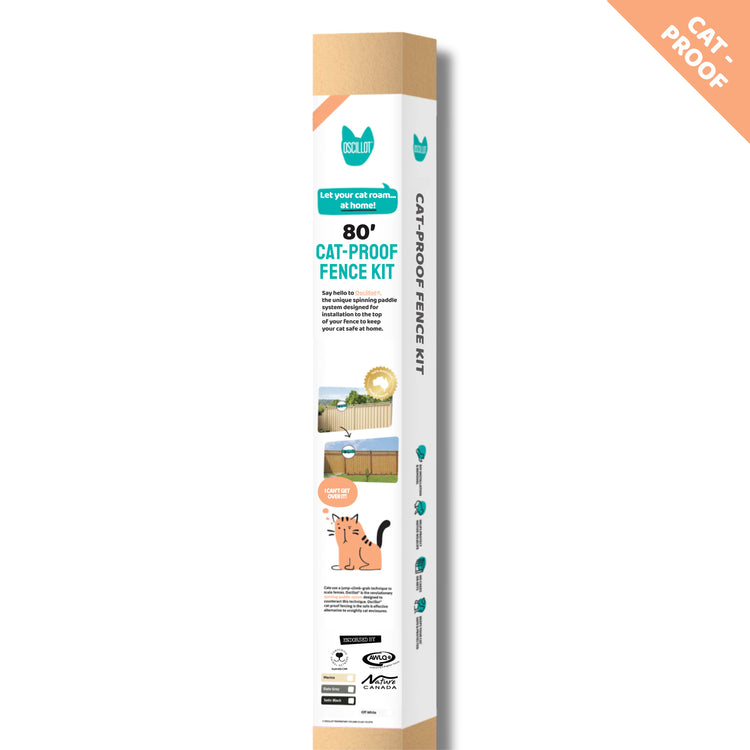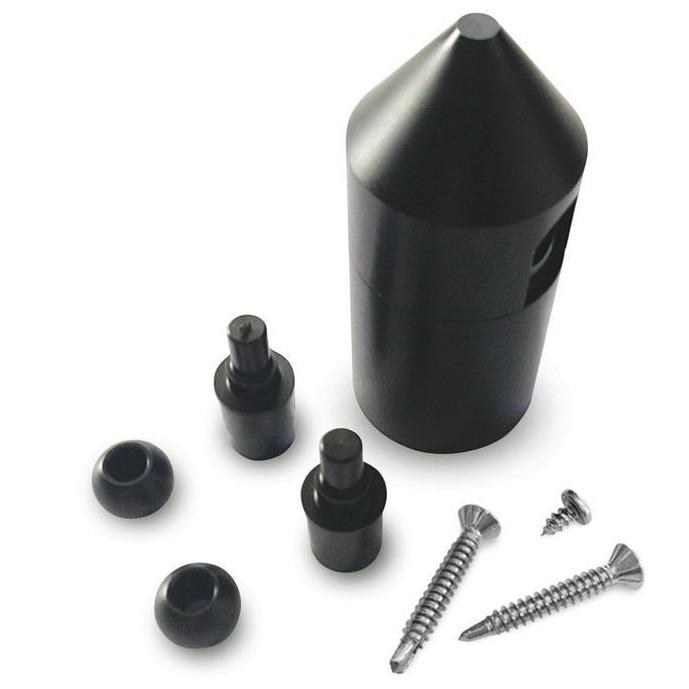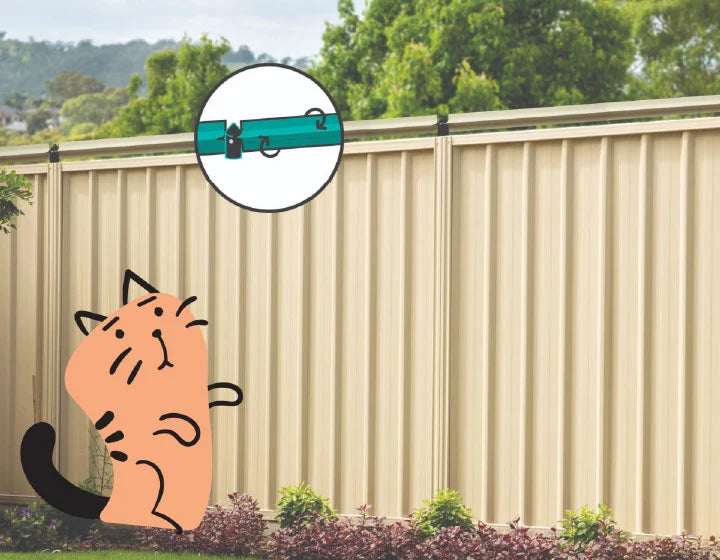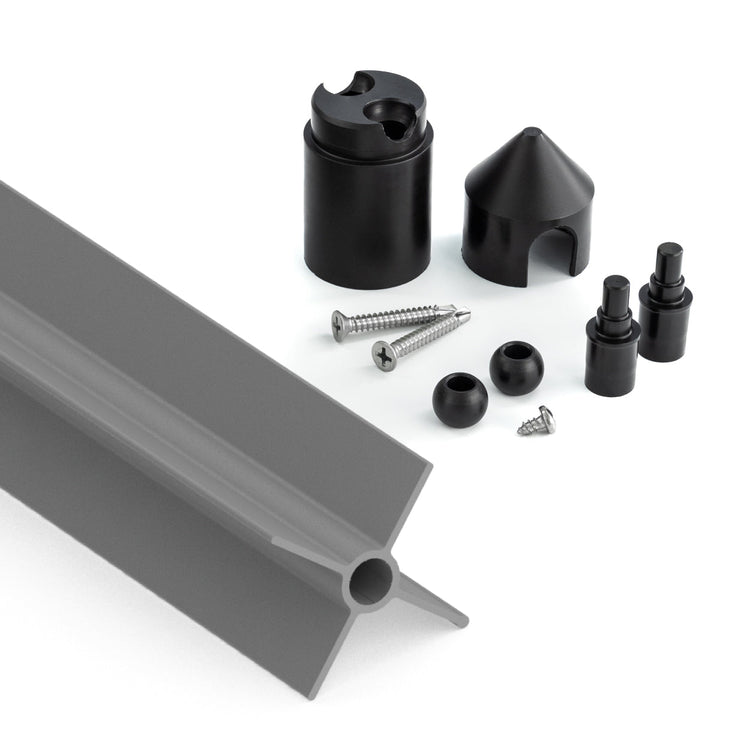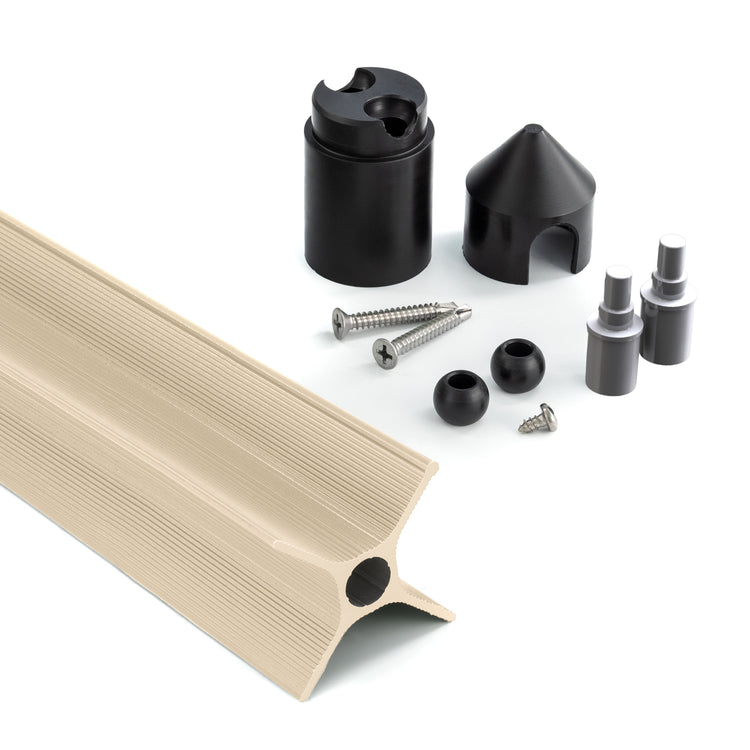Creating Recovery-Ready Outdoor Spaces for Shelter Cat Therapy

Essential Elements for Cat Recovery Spaces in America
- Secure perimeter with cat-proof fencing is vital for shelter cat safety
- Oscillot fence systems provide protection while allowing outdoor freedom
- Proper sizing of containment areas based on shelter capacity and cat needs
- Weather-appropriate shelters for various US climate regions
- Enrichment features that support rehabilitation and socialization
- Tree protection systems to prevent escapes in wooded areas
- Double-entry systems to prevent accidental escapes during staff access
- Regional adaptations for extreme weather conditions across the US
- Natural elements integration for enhanced therapeutic benefits
- Specialized accommodations for senior and special needs cats
Introduction: The Importance of Safe Outdoor Spaces for Shelter Cat Recovery in the USA
In animal shelters across America, providing safe outdoor access for cats in recovery can significantly improve their physical and emotional well-being. Many shelter cats come from traumatic backgrounds or have undergone medical procedures that require careful rehabilitation. Creating secure outdoor recovery spaces allows these cats to experience fresh air, natural stimulation, and exercise in a controlled environment, accelerating their healing process and improving adoptability. These therapeutic environments can reduce stress hormones, encourage natural behaviors, and provide mental stimulation that indoor-only environments often cannot match.
The benefits of outdoor access for shelter cats are well-documented, but safety remains the primary concern. Without proper containment systems, shelters risk escape, injury, or exposure to predators. This is where specialized cat containment solutions like Oscillot come into play, providing American shelters with reliable options for creating secure outdoor therapy spaces. According to animal behavior specialists, controlled outdoor exposure can reduce common shelter-related stress behaviors such as excessive grooming, hiding, and inappropriate elimination by up to 70% in many cases.
In this article, we'll explore how US-based animal shelters and rescue organizations can create effective recovery-ready outdoor spaces for cat therapy, focusing on containment solutions, environmental enrichment, and considerations specific to different American regions and climates. From the humid Southeast to the arid Southwest and cold Northeast, we'll address the unique challenges each region faces when implementing outdoor recovery spaces for shelter cats.
1. Establishing Secure Perimeters with Cat-Proof Fencing Systems
The foundation of any recovery-ready outdoor space is a secure perimeter that prevents escapes while allowing cats to enjoy the outdoors safely. Traditional fencing often falls short when it comes to containing cats, as they can climb, jump, or squeeze through small openings. Standard chain-link or wooden fences may seem adequate but fail to account for cats' remarkable climbing abilities and determination to explore beyond boundaries. Effective cat containment requires specialized systems designed with feline behavior and capabilities in mind.
For larger shelter facilities, 200-foot cat-proof fence kits ($1,351.00) provide comprehensive coverage, including 50 paddles and all necessary components for installation. These systems can enclose significant outdoor areas, allowing multiple cats to enjoy the space simultaneously. For medium-sized shelters, the 100-foot cat-proof fence kit ($710.00) offers a more economical option while maintaining the same level of security. These larger kits are particularly valuable for high-capacity shelters that may have 20+ cats in various stages of recovery at any given time, allowing for efficient use of outdoor therapy resources.
The key feature of these systems is the rotating paddle design that prevents cats from gaining the leverage needed to climb over the fence. When a cat attempts to climb, the paddles rotate, causing the cat to safely slide back down. This humane deterrent works effectively without causing harm or distress to the animals. Unlike electric fencing or barbed wire alternatives, the Oscillot system relies on simple physics rather than aversive stimuli, making it an ethical choice aligned with modern animal welfare standards.
Installation Tip for US Shelters
When installing cat-proof fencing at American shelter facilities, ensure the minimum fence height is 6 feet to accommodate more athletic cat breeds common in US shelters. The Oscillot system can be installed on existing fences, making it a cost-effective option for shelters with limited budgets. For optimal security in shelter environments, consider installing the paddles at a slight outward angle (10-15 degrees) to further discourage climbing attempts from particularly determined cats.
For shelters with smaller recovery areas or isolation zones, 60-foot ($443.00) or 40-foot ($301.00) kits provide the perfect solution. These compact systems are ideal for creating dedicated recovery spaces for cats with special needs or those requiring separation from the general population. They're particularly valuable for creating quarantine areas for cats recovering from contagious conditions or for shy cats who need a less stimulating environment during their rehabilitation process.
2. Sizing Considerations for US Shelter Facilities
When designing outdoor recovery spaces for shelter cats in the United States, proper sizing is crucial to accommodate varying shelter capacities and cat populations. The space should be large enough to provide freedom of movement while remaining manageable for staff supervision. Experts recommend a minimum of 15-20 square feet per cat for shared recovery spaces, with additional room if the area will house cats for extended periods. Proper sizing not only ensures physical comfort but also reduces territorial disputes and stress-related behaviors that can impede recovery.
For medium-sized American shelters, the 80-foot cat-proof fence kit ($568.00) provides an ideal balance of space and security. This kit includes 20 paddles and 24 dual knuckle post kits, offering sufficient coverage for a therapeutic outdoor area that can accommodate multiple cats in recovery simultaneously. This size is particularly effective for municipal shelters in suburban areas that typically manage 30-50 cats at varying stages of rehabilitation.
Smaller rescue organizations or foster homes participating in shelter programs can benefit from the 20-foot ($159.00) or 16-foot ($117.00) kits, which are perfect for creating intimate recovery spaces for one or two cats at a time. These compact solutions are particularly valuable for cats requiring isolation during recovery from illness or surgery. For specialized rescue organizations focusing on feral cat rehabilitation or those working with particularly traumatized animals, these smaller enclosures provide the controlled environment necessary for gradual socialization.
When determining the appropriate size for your shelter's recovery space, consider these factors:
- Number of cats typically in recovery at one time
- Average length of stay in the recovery area
- Types of medical conditions being treated
- Staff availability for supervision
- Local climate and seasonal considerations
- Behavioral characteristics of your shelter's typical cat population
- Available budget for both initial setup and ongoing maintenance
For larger shelter operations with extensive outdoor areas, the 300-foot cat-proof fence kit (on sale for $2,027.00, regularly $2,534.00) provides comprehensive coverage. This extensive system is ideal for shelters with high cat populations or those wanting to create multiple separate recovery zones within a larger outdoor area. Large-scale operations like county animal services or major nonprofit shelters in metropolitan areas can utilize these extensive systems to create graduated recovery environments that transition cats through different stages of rehabilitation.
3. Weather-Appropriate Shelters for Different US Climate Regions
The United States encompasses diverse climate zones, from the humid subtropical Southeast to the arid Southwest and the cold Northeast. Creating weather-appropriate shelters within your outdoor recovery space ensures cats remain comfortable year-round, regardless of your shelter's location. Weather considerations are not merely about comfort—extreme temperatures can significantly impact recovery times and even pose serious health risks to cats already in vulnerable conditions.
For hot climates like those found in the Southern and Southwestern states, incorporate these features:
- Multiple shaded areas using trees, pergolas, or shade sails
- Elevated platforms that allow air circulation underneath
- Water features like shallow pools or fountains for cooling
- Cool substrate areas (marble or tile) for cats to rest on
- Misting systems that activate during peak heat hours (95°F+)
- Solar-powered fans in sheltered areas to maintain air circulation
- Insulated roof materials that reflect rather than absorb heat
In colder Northern regions, focus on these elements:
Cats in colder areas need extra protection from harsh winter conditions. Insulated cat houses with small entrances help trap body heat, keeping cats warm even during freezing temperatures. South-facing sun spots let cats soak up natural warmth during the day. For extra comfort, you can add heated beds or outdoor-rated heating pads that provide gentle warmth without risk of burns or electrical hazards.
Wind protection is just as important as temperature control. Strategic windbreaks block cold gusts that can quickly chill even a well-furred cat. Materials that absorb heat during sunny periods and release it slowly at night help maintain more stable temperatures. Keeping cats off the cold ground with raised platforms prevents heat loss through conduction, while enclosed tunnels between different structures let cats move around the space without exposure to snow or freezing air.
Regional Adaptation Tip
In regions with extreme weather fluctuations, like the Midwest, create modular shelters that can be modified seasonally. Use removable insulation panels in winter that can be replaced with ventilation screens in summer, ensuring your recovery space remains functional year-round. For maximum versatility, design your primary structures with interchangeable wall panels that staff can swap out in under 30 minutes as weather conditions change.
Once you've established the secure perimeter using an appropriate cat-proof fence kit, you can focus on creating these climate-appropriate features within the enclosed space, ensuring cats in recovery have access to comfortable resting areas regardless of weather conditions. The modular nature of the Oscillot system allows shelters to adapt the shape and size of their recovery spaces seasonally, potentially creating a more compact, easily heated area during winter months that can be expanded during warmer seasons.
4. Enrichment Features for Rehabilitation and Socialization
Effective cat therapy spaces go beyond basic containment to include enrichment features that support rehabilitation and socialization. These elements are crucial for shelter cats recovering from trauma, illness, or surgery, helping them regain confidence and develop positive behaviors. Research from veterinary behaviorists indicates that enriched environments can reduce recovery times by up to 30% for many common conditions and significantly improve behavioral outcomes for cats with anxiety or fear-based issues.
Within your securely fenced recovery area, incorporate these enrichment features:
1. Vertical Space: Cats naturally seek elevation for security and observation. Install cat trees, shelves, and perches at various heights to encourage climbing and provide vantage points. Vertical elements should include both open platforms for confident cats and partially enclosed perches for those needing more security. Ideally, create pathways that allow cats to traverse the entire enclosure without touching the ground—a feature particularly beneficial for cats recovering from lower limb injuries.
2. Sensory Stimulation: Include different textures (grass, mulch, smooth stones) to stimulate paw pads and encourage exploration. Plant cat-safe herbs like catnip, cat grass, and silver vine in designated areas. Consider incorporating auditory elements like wind chimes or bubbling water features that provide gentle, non-threatening sound stimulation. For visual enrichment, install bird feeders outside but visible from the enclosure to provide safe "cat TV" opportunities.
3. Interactive Elements: Rotate weather-resistant toys that encourage natural behaviors like stalking, pouncing, and batting. Consider puzzle feeders that can be secured to prevent removal from the enclosure. For rehabilitation purposes, design interactive elements that encourage specific movements beneficial for recovery—for example, reaching toys for cats recovering from shoulder injuries or stepping platforms for those regaining hind limb strength.
4. Rest Areas: Provide multiple resting spots with different exposure levels (sun, shade, partial cover) to accommodate individual preferences and support cats who may be avoiding social interaction. Include both ground-level and elevated resting areas with varying degrees of enclosure to suit different comfort levels and recovery needs.
For shelters working with particularly shy or traumatized cats, create "confidence courses" with gradually increasing challenges. Start with simple pathways and hiding spots, then progress to more complex arrangements as cats gain comfort. This approach is especially effective for older cats who may need additional support during recovery. Behavioral rehabilitation specialists recommend designing these courses with clear sight lines so cats never feel trapped or cornered, which can trigger fear responses and setbacks in their recovery journey.
5. Tree Protection for Wooded Recovery Areas
Many American shelters and rescue facilities are situated in areas with mature trees, which can pose both benefits and challenges for outdoor cat enclosures. Trees provide natural shade and enrichment but can also serve as escape routes if not properly secured. A single unprotected tree within an enclosure can compromise the entire security system, as most cats can easily climb tree trunks regardless of age or physical condition.
The Cat-Proof Tree Guard ($29.99) is specifically designed to prevent cats from climbing trees within your enclosure. These guards fit trees with diameters up to 9.25 inches and can be combined for larger trees. Endorsed by the Animal Welfare League of QLD, these tree guards provide an essential safety feature for wooded recovery areas. The lightweight, weather-resistant design ensures long-term functionality without damaging the trees or requiring frequent replacement, even in harsh American weather conditions.
For shelters with multiple trees within their recovery space, installing these guards on all potential climbing trees is essential. The smooth surface prevents cats from gaining traction, effectively blocking their access to this potential escape route while still allowing them to enjoy the natural benefits trees provide:
- Dappled shade that creates comfortable microenvironments
- Fallen leaves for sensory enrichment and play
- Natural habitat for birds and insects that provide visual stimulation
- Root systems that create natural hiding spots and exploration opportunities
- Seasonal changes that provide ongoing environmental novelty
- Wind protection during stormy weather conditions
- Natural cooling effect through transpiration during hot summer months
Environmental Integration Tip
When incorporating trees into your cat recovery space, consider creating designated "tree zones" with seating for staff and volunteers. These areas can serve as quiet observation points for monitoring cats' behavior and progress while providing a pleasant environment for human-cat interaction. Position benches or chairs under tree canopies to create comfortable spaces where staff can complete documentation while maintaining visual contact with recovering cats, maximizing efficiency in shelter operations.
By properly securing trees with tree guards and integrating them thoughtfully into your recovery space design, you can create a more naturalistic environment that supports cats' innate behaviors while maintaining security. For facilities with particularly large trees exceeding the standard guard size, consider installing multiple guards in a vertical arrangement or consulting with an arborist about custom solutions that maintain both tree health and enclosure security.
6. Designing for Different Recovery Needs in US Shelters
Different cats in US shelters have varying recovery needs based on their medical conditions, behavioral challenges, or trauma histories. Creating specialized zones within your outdoor recovery space can address these diverse requirements effectively. Veterinary behaviorists recommend tailoring environments to specific recovery goals rather than using a one-size-fits-all approach, as this targeted design can significantly accelerate rehabilitation outcomes.
Post-Surgical Recovery Zones
For cats recovering from surgery, create quiet areas with these features:
Cats healing from surgery need special care in their outdoor spaces. Smooth, easy-to-clean surfaces help prevent infection and make it simple for staff to maintain proper hygiene. Instead of steep climbing structures that might strain healing tissues, gentle inclines allow cats to reach elevated areas without jumping. Comfortable resting spots raised off the ground keep surgical sites clean and reduce pressure on sensitive areas.
Protection from harsh weather is essential, as extreme temperatures or direct sunlight can stress a cat's healing body. Food, water, and litter boxes should be placed within easy reach so cats don't need to travel far or navigate obstacles. These areas should be separated from high-energy play zones where other cats might accidentally bump into recovering patients. All surfaces should be made of materials that can be regularly sanitized without using chemicals that might irritate sensitive cats.
Socialization Zones for Fearful Cats
For cats with fear or anxiety issues, design graduated exposure areas:
- Perimeter hiding spots with clear sightlines to activity areas
- Progressive challenge zones that reward exploration
- Multiple escape routes to prevent cornering feelings
- Sound buffering elements to reduce startling noises
- Elevated observation points where cats can safely watch interactions
- Scent-enriched areas with familiar and comforting smells
- Predictable, routine-friendly layouts that build confidence through familiarity
Using smaller 40-foot or 60-foot cat-proof fence kits, you can create separate, specialized recovery zones within a larger enclosure. This approach allows for customization based on the specific needs of cats currently in your shelter's care while maintaining the security benefits of the Oscillot system. For shelters with limited space, consider creating multi-purpose zones with movable barriers that can be reconfigured based on current population needs without compromising the secure perimeter.
7. Staff Access and Monitoring Considerations
Effective recovery spaces require thoughtful design for staff access, allowing for easy monitoring, maintenance, and interaction with cats while preventing escapes during entry and exit. Even the most secure containment system can be compromised if staff access points aren't properly designed and protocols aren't consistently followed. Security and functionality must be balanced to ensure both cat safety and operational efficiency.
Double-Entry Systems
Create a double-door entry system (sometimes called a "man trap" or "airlock") using additional fencing components from the spare parts collection. This setup ensures that even if a cat attempts to dash out when staff enter, they remain contained within a secondary enclosure. The most effective designs include a small vestibule area approximately 4x4 feet with self-closing, inward-opening doors and clear signage reminding staff to ensure one door is always closed before opening the other.
Observation Points
Designate specific observation areas where staff can monitor cats without disturbing their natural behaviors:
Watching cats without disrupting them gives valuable insights into their recovery progress. Elevated platforms outside the enclosure let staff observe natural behaviors that might change when humans are present. Inside the space, strategically placed benches provide comfortable spots for direct interaction when appropriate. Weather-protected stations with clipboards or tablets make it easy to record observations about eating, playing, and social interactions—all important recovery indicators.
Some shelters use simple camera systems to keep an eye on cats during overnight hours or when staff levels are low. One-way viewing panels, similar to those used in wildlife observation, let people watch without cats seeing them, which is especially helpful for monitoring shy cats who might hide when they know they're being watched. Well-designed staff pathways minimize disruption during routine care, while communication systems like walkie-talkies help coordinate activities between different recovery zones.
Staff Training Tip
Develop a standardized training program for all staff and volunteers who will access the recovery space. Include protocols for entry/exit procedures, emergency response for escaped cats, and guidelines for minimally disruptive maintenance tasks. This ensures consistency in how the space is used and maintained. Consider creating illustrated quick-reference guides posted at entry points that outline key security procedures and include emergency contact information for immediate response if containment is compromised.
For maintenance access, incorporate lockable service gates at strategic points around the perimeter. These should be designed with the same security features as the main entry but positioned to allow staff to quickly access different zones for cleaning, replenishment of resources, or emergency intervention. Self-closing mechanisms and redundant locking systems are particularly important for these utility access points, as they may be used during busy maintenance periods when attention might be divided.
8. Regional Adaptations for US Climate Extremes
The United States experiences diverse climate conditions that require specific adaptations to outdoor cat recovery spaces. From the freezing winters of the Northeast to the scorching summers of the Southwest, regional considerations are essential for year-round functionality. Climate-appropriate design isn't merely a comfort issue—it directly impacts therapeutic efficacy and can prevent serious health complications in already vulnerable animals.
Cold-Weather Adaptations (Northeast/Midwest)
For shelters in colder regions, incorporate these features:
Winter in the Northeast and Midwest can be brutal for outdoor cat spaces. Heated cat houses with thermostat controls provide safe warmth without fire risks. Placing solid barriers on the north side of enclosures blocks frigid winds that can quickly chill even well-furred cats. Regular snow removal from main pathways keeps the space accessible for both cats and caregivers.
Dark-colored materials like slate or dark wood absorb sunlight during the day and slowly release heat as temperatures drop. Insulated flooring materials—such as raised platforms with straw or specialized insulation underneath—prevent heat loss through the ground, which is especially important for older cats with arthritis. Some shelters create microenvironments within the larger space using straw bales or insulated panels arranged to block wind while trapping warmth, giving cats options for different temperature zones.
Hot-Weather Adaptations (South/Southwest)
For shelters in hotter climates, focus on:
- Misters or fog systems that activate during peak heat hours
- Reflective roof materials over seating and rest areas
- Underground or partially buried retreats that maintain cooler temperatures
- Adequate water stations with automatic refill systems
- Strategic planting of native shade trees (with appropriate tree guards)
- Cooling pads or tiles in resting areas that remain cool even in direct sun
- Ventilation systems that encourage air movement through sheltered areas
When selecting your cat-proof fence kit, consider how the components will perform in your regional climate. The vinyl components in Oscillot systems are designed to withstand temperature extremes, but proper installation is crucial for longevity in challenging weather conditions. In areas with significant freeze-thaw cycles, ensure post foundations extend below the frost line to prevent heaving and structural compromise during seasonal transitions.
For coastal regions with high humidity and salt exposure, opt for aluminum components when available, as they offer superior corrosion resistance compared to other metals. This ensures your investment in creating a secure recovery space remains effective for years to come. Additionally, in hurricane-prone areas, consider reinforced mounting systems and removable elements that can be temporarily stored during extreme weather events to prevent damage and extend the system's lifespan.
9. Integrating Natural Elements for Therapeutic Benefits
Natural elements play a crucial role in creating effective therapy spaces for shelter cats. Incorporating plants, natural substrates, and other organic features can significantly enhance the therapeutic value of your outdoor recovery area. Research indicates that exposure to natural elements can reduce stress hormones in cats by up to 40% compared to artificial environments, making natural integration a powerful tool in rehabilitation efforts.
Cat-Safe Plants
Incorporate these cat-safe plants to create a naturally enriching environment:
Plants do more than just look nice in cat recovery spaces—they provide important sensory experiences and health benefits. Cat grass gives cats something safe to chew on, which helps their digestion and satisfies natural grazing instincts. Catnip is famous for its stimulating effect on most cats, encouraging playful behavior that's great for physical therapy. For cats who don't respond to catnip, silver vine offers similar benefits with its appealing scent.
Valerian has a naturally calming effect that can help anxious cats feel more secure in new environments. Cat thyme attracts cats with its scent and encourages investigation and play. Lemongrass provides interesting textures for cats to brush against, while spider plants create visual interest with their dangling leaves that move in gentle breezes. All these plants are non-toxic, making them safe choices even if cats decide to take an experimental nibble.
Natural Substrate Zones
Create varied ground surfaces to stimulate cats' senses and provide different tactile experiences:
- Soft mulch areas for comfortable resting
- Sandy patches that encourage natural elimination behaviors
- Smooth stone pathways for texture variation
- Small patches of cat-safe grass for grazing
- Loamy soil areas for natural digging behaviors
- Flat rock formations for sunning and claw maintenance
- Leaf litter zones that change seasonally and provide foraging opportunities
Environmental Enrichment Tip
Rotate natural elements seasonally to provide novel experiences throughout the year. Introduce fallen leaves in autumn, pine cones in winter, and fresh herb plantings in spring. This rotation keeps the environment stimulating even for cats with longer recovery periods. Consider creating a "sensory garden" section with rotating plants that provide different scents, textures, and visual experiences throughout the seasons, stimulating cats' natural curiosity and exploratory behaviors.
When designing your recovery space, ensure that all natural elements are contained within your cat-proof fence perimeter. Position plants away from the fence line to prevent them from becoming potential climbing aids that could compromise the security of your enclosure. For added safety, maintain a 2-3 foot "clear zone" adjacent to all fencing where no tall plants or climbing structures are placed, ensuring the Oscillot system remains effective at preventing escapes.
10. Specialized Features for Older and Special Needs Cats
Many shelter cats, particularly older ones or those with special needs, require additional considerations in outdoor recovery spaces. These adaptations ensure that all cats, regardless of age or physical limitations, can benefit from therapeutic outdoor access. With America's shelter population increasingly including senior and special needs cats, these accommodations are becoming essential components of comprehensive care programs rather than optional features.
Mobility Accommodations
For cats with mobility issues, incorporate these features:
Older cats and those with physical limitations deserve outdoor time too, but they need special considerations. Gentle ramps with non-slip surfaces replace stairs or jumps, allowing cats with arthritis or injuries to move between levels safely. Wider platforms give unsteady cats more room to navigate without falling, while multiple entry and exit points mean they're never forced to use challenging routes.
Strategic "step-ups" help cats with limited jumping ability reach higher spots gradually instead of all at once. Soft landing areas beneath elevated spaces provide protection if a cat misjudges a jump or loses balance. For cats with painful joints, heated resting surfaces offer comfort in cooler weather, easing stiffness and improving mobility. Low-effort enrichment activities like ground-level scent games or gentle motion toys provide mental stimulation without requiring athletic ability.
Sensory Adaptations
For cats with sensory impairments, consider these modifications:
- Textured pathway markers for visually impaired cats
- Scent markers at key locations to aid in navigation
- Sound-dampening features for cats sensitive to noise
- High-contrast visual elements to help cats with limited vision
- Vibration-dampening surfaces for cats with vestibular issues
- Consistent layout design that allows memorization of the environment
- Protected areas that limit overwhelming sensory input for sensitive cats






